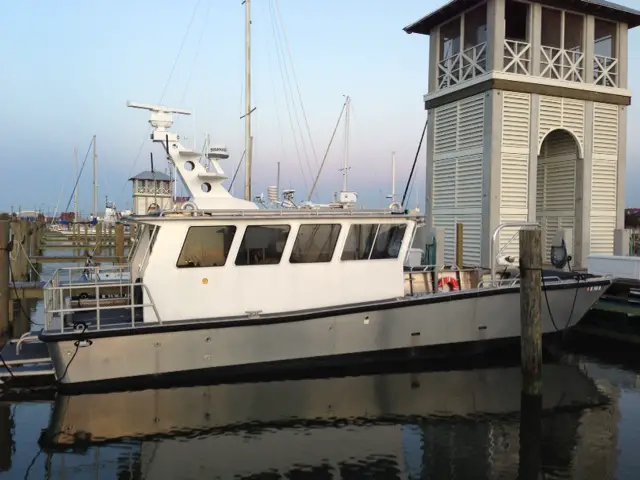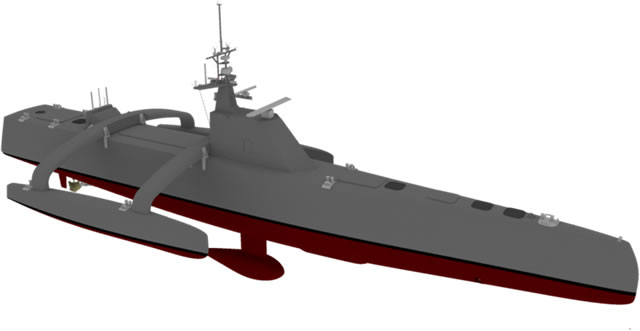Breaking news
Leidos Completes At-Sea Testing of Prototype Maritime Autonomy System for future ACTUV.
| 2014
 The surrogate vessel upon which testing was just complete. Picture: Leidos |
|||
The
Leidos strategy to evaluate the prototype ACTUV autonomy system for COLREGS
compliance includes both simulation and at-sea testing. The team has completed
approximately 26,000 simulation runs of the system. Testing of COLREGS
involves the ACTUV surrogate and one interfering vessel in a variety of
meeting, crossing, overtaking and transit scenarios in both simulation
and on the water test events. During a recent on-the-water test event, the surrogate boat autonomously navigated through narrow channels avoiding navigation aids and submerged hazards. The boat safely avoided surface ships it encountered along the route, satisfying COLREGS requirements in completely unscripted events. While continuing to use the surrogate vessel to test ACTUV software and sensors, construction of Sea Hunter, the first ACTUV vessel, continues at Christensen Shipyard in Clackamas, Oregon. Sea Hunter is scheduled to launch in late summer 2015 and begin testing in the Columbia River shortly thereafter. |
|||
 Anti-Submarine Warfare Continuous Trail Unmanned Vessel (ACTUV). Picture: Leidos |
|||



























